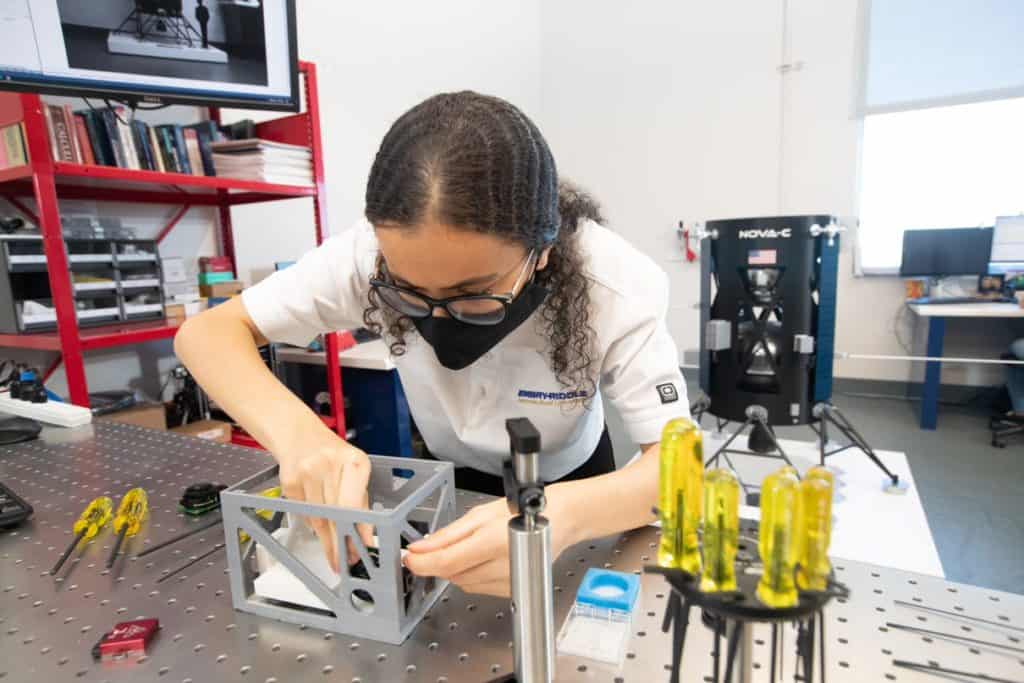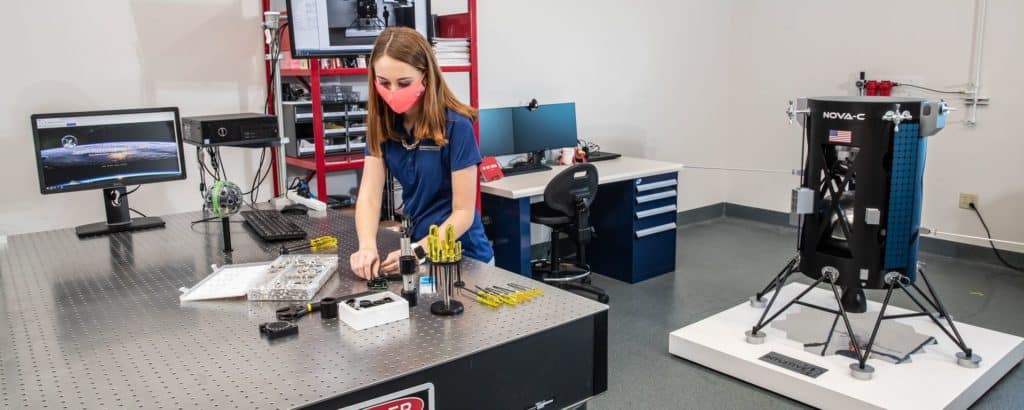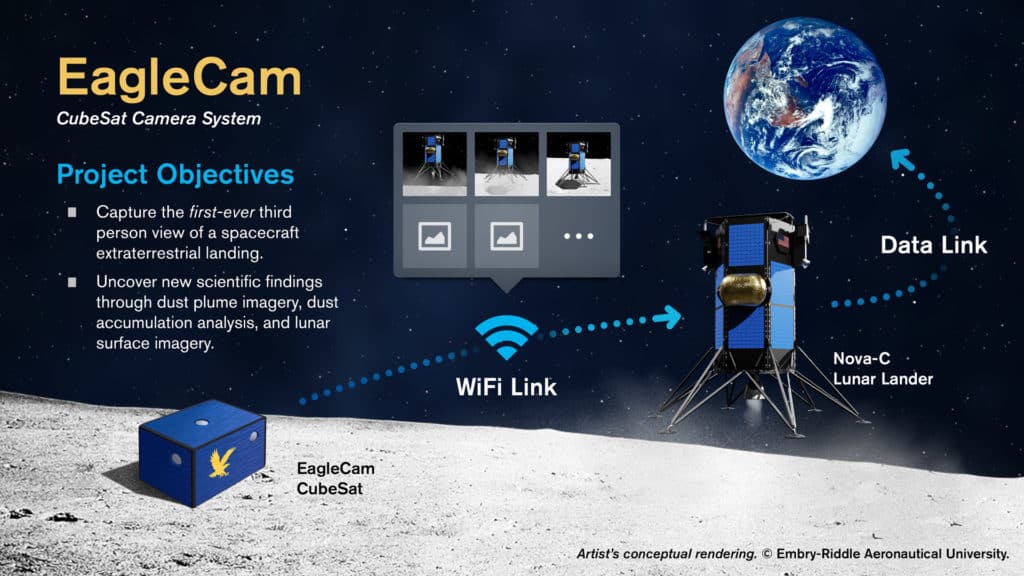A Selfie on the Moon

David Zuehlke 


By Charlie Youngmann
The Nova-C Lunar Lander is slated to launch in the fall of 2021, and when it gets to the moon, it’s going to take a selfie. One of the people behind that selfie is a student from right here in Chesapeake Country.
Ahead of the United States’ crewed return to the moon in 2024, the Nova-C Lunar Lander will launch a science and technology payload to a valley in the Ocean of Storms. Though “selfie” may not be the technical term used at Embry-Riddle Aeronautical University in Daytona Beach, Fla., their EagleCam team plans to take the first-ever third-person shot of a spacecraft making an extraterrestrial landing.
Ph.D. aerospace engineering student David Zuehlke of Millersville has spent the past year working on a camera unit that can be deployed from the Nova-C and document its landing. Supported by a network of national scientists, Embry-Riddle’s EagleCam team—three engineering professors along with a large interdisciplinary team of students—is designing a camera and communication system, or CubeSat, to launch to the moon and shoot the astronomical selfie. Just before approach, the CubeSat will deploy and freefall 100 feet to the surface to give the world its first glimpse of the spacecraft’s lunar landing.
One of just 20 students involved in the mission, Zuehlke is on the Launcher team, tasked with determining how the unit will move once it has been deployed from the lander and calibrating the cameras accordingly.
Zuehlke’s military family moved frequently while he was growing up, but landed in Millersville in 2005, where Zuehlke stayed until going to college. “That’s mostly where I grew up, so that’s why I call Maryland home,” Zuehlke said.
Zuehlke’s degree work includes tracking satellites in order to prevent objects in Earth’s orbit from crashing into each other, he said.
Dr. Troy Henderson is his advisor. Henderson has been an associate professor of aerospace engineering at Embry-Riddle for six years and specializes in spacecraft dynamics and control. His courses in orbital mechanics deal with problems similar to what the EagleCam team has been working with.
Henderson explained that Steve Altemus, president and CEO of Intuitive Machines and alumni of his department at Embry-Riddle, proposed a challenge to the school’s Dean of Engineering. “If a student team could build and operate a camera that would take the first ever third-person view of their lunar lander, then [Altemus] would manifest it on the flight,” Henderson promised.
In May 2019, NASA announced that Intuitive Machines was selected for one of their first commercial lunar payload programs. Shortly after Intuitive Machines had secured their contract, the EagleCam team was formed and put to work.
“The outcome of this project is so much more than just a picture,” Henderson said. “We can build a 3D map of what our camera sees to a fairly accurate model.”
By taking a series of pictures from five different cameras and tracking their movement and rotation after deployment, the EagleCam team will be able to digitally recreate the local topography of the moon, says Henderson. From there it will capture the dust plume kicked up in the lander’s final touchdown, he added.
Aside from EagleCam’s goal of capturing the first third-person point of view image of a spacecraft landing on another celestial body, this mission will utilize the first Wi-Fi communication system on the moon, Henderson said.
“Out of a very small package with a couple of cameras that started off as a student challenge, this has grown into something significantly more,” Henderson said.
As for Zuehlke, in the future he plans on working in space surveillance, or keeping tabs on potentially dangerous orbital debris.
